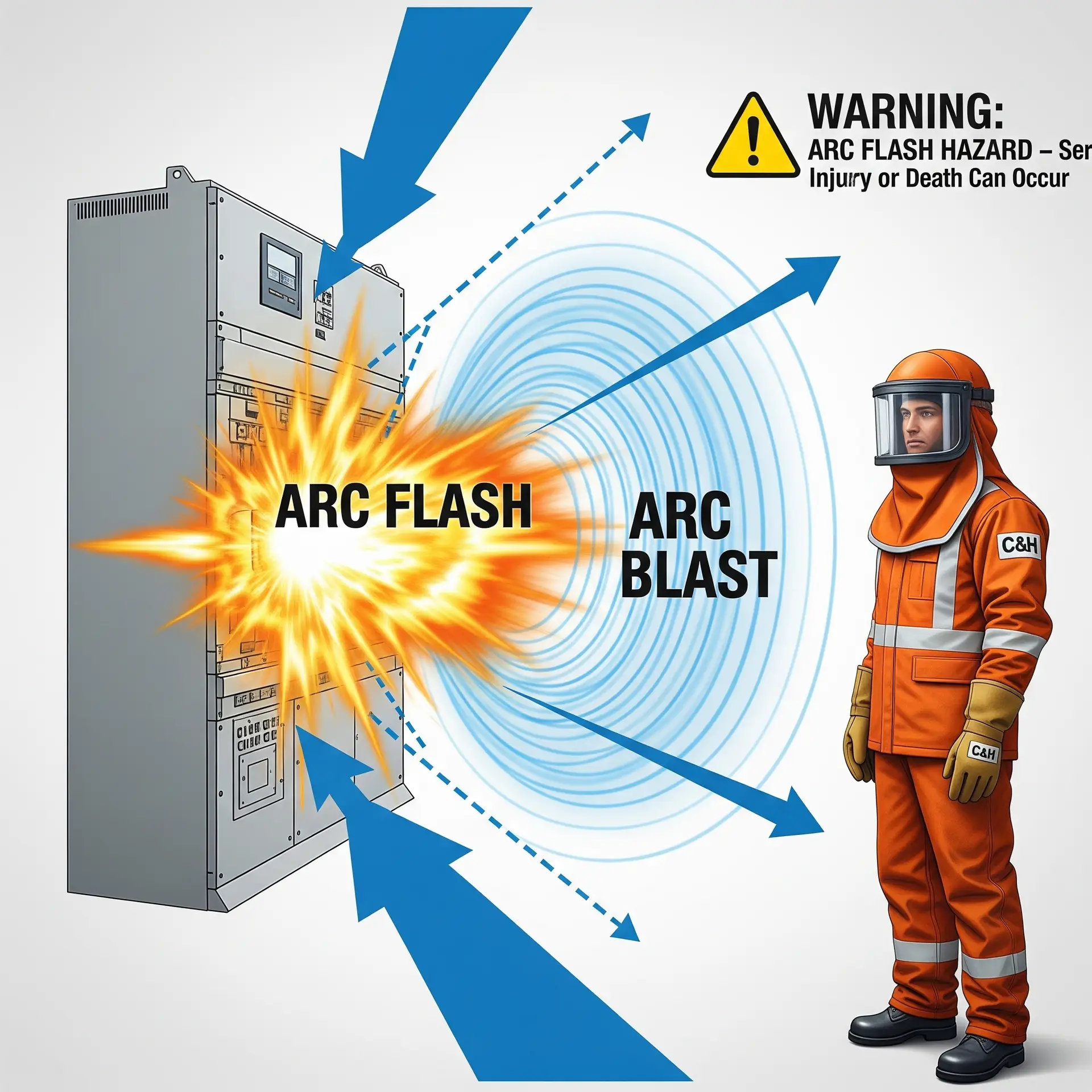
A Facility Manager’s Guide to Protecting People, Equipment & Uptime
Electrical systems are the heart of your facility, powering production, life safety systems, HVAC, IT systems, and every critical function that keeps your operations running. But with that power comes risk.
One of the most dangerous hazards? Arc flash.
An arc flash is a sudden release of electrical energy through the air when a fault occurs in energized equipment. It creates an explosion of heat, pressure, and toxic gases — hot enough to vaporize metal, ignite clothing instantly, and permanently injure or kill workers within milliseconds.
According to NFPA and OSHA, arc flash incidents injure or kill hundreds of workers every year, and most are completely preventable with proper safety practices.
Common causes include:
- Equipment failure due to dust, corrosion, or aging components
- Loose or damaged electrical connections
- Human error during maintenance
- Improper electrical system design and coordination
Even well-maintained facilities can be at risk if there isn’t a strong electrical safety program in place.
Arc flash temperatures can exceed 35,000°F – hotter than the surface of the sun.
The blast can cause:
- Severe burns
- Lung damage from superheated gases
- Permanent hearing and vision loss
- Shrapnel injuries
- Fatalities
And the danger doesn’t stop at people. Arc flash events can destroy switchgear, cause extended unplanned downtime, and result in millions in losses.
Facilities are legally required to protect workers from arc flash hazards.
That means:
- Conducting an Arc Flash Hazard Analysis
- Applying compliant warning labels on electrical equipment
- Providing PPE selection based on incident energy levels
- Training employees on arc flash hazards and safe work practices
- Maintaining up-to-date electrical documentation and one-line diagrams
- Verifying electrical equipment is properly maintained (NFPA 70B)
Failing to comply can result in:
- OSHA citations & fines
- Workers’ compensation claims
- Legal liability
- Damaged reputation & loss of business
The first step in conducting an arc flash risk assessment is having an updated one-line diagram.
One of the biggest misunderstandings we see is the order of operations. Before you can move forward with the risk assessment, you must first have an accurate and up-to-date one-line diagram.
Your one-line diagram is the roadmap of your electrical system. Without it, hazard calculations are unreliable, and the resulting labels may be inaccurate or even misleading.
If you have workers who operate, maintain, or service electrical equipment at 50 volts or more, OSHA requires protection.
Industries we commonly support:
- Manufacturing
- Industrial facilities
- Hospitals & healthcare
- Office campuses
- Data centers
- Municipal facilities
- Universities & schools
C&H Electric provides end-to-end arc flash safety and compliance support:
- Arc Flash Hazard Analysis & Labeling
- NFPA 70E Training & Documentation
- Electrical Maintenance & Testing
- Updated One-Line Diagrams
- Corrective Action Plans to fix hazards
We don’t just uncover risks, we help you eliminate them.
Build a Safer, Stronger Electrical Maintenance Strategy
The most effective maintenance plan is one that reduces arc flash risk, supports NFPA 70E compliance, and keeps your electrical systems performing at their highest level — without unplanned shutdowns.
Partner with C&H Electric to implement a proactive, compliance-driven maintenance program that identifies hazards early, protects your people and operations, and prevents costly electrical failures before they happen.